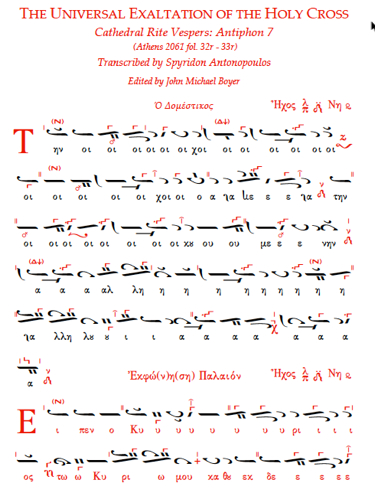

There is, as of yet, no definitive agreement on how best to reconcile Byzantine chant, in all its glorious intricacy, to this new world of English and Western Music. Indeed, in most of our parishes, where English is used alongside or in place of Greek, and where musicians come from a predominantly Western background, they have long since ceased to apply. As the Church in America evolves, however, we cannot take these preconditions for granted. So why does controversy arise? Because the formal definition of Byzantine chant is predicated on two factors: Greek as the sole language of the Church, and musicians immersed and trained in the Eastern “yphos”. Other important qualities of traditional Byzantine chant include unique scale tunings and musical notation.

For example, there are prescribed ending patterns for musical phrases based on final accents. Well-defined melodic patterns adapt the form of the music to the cadence of the Greek language, so that accents and syllables shape the melodic lines. In general, all agree on the classical understanding of the term: a system of tones, or modes. It may come as a surprise to some that after centuries of liturgical use in the Orthodox Church, there is today some controversy among chanters regarding what exactly is Byzantine chant.


 0 kommentar(er)
0 kommentar(er)
